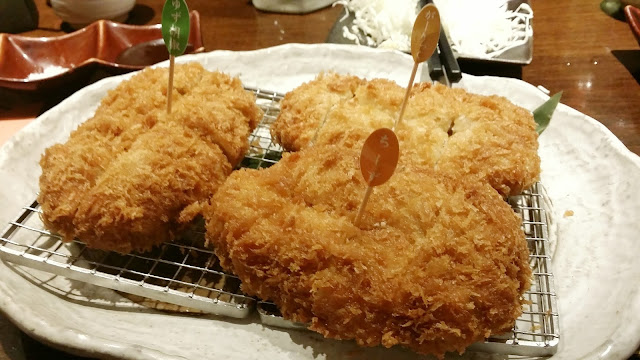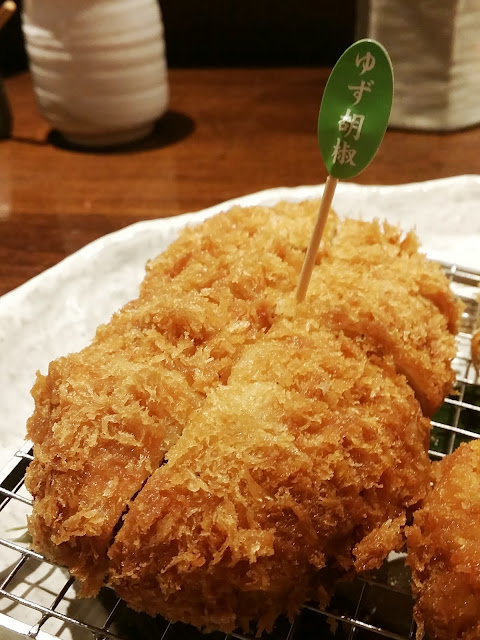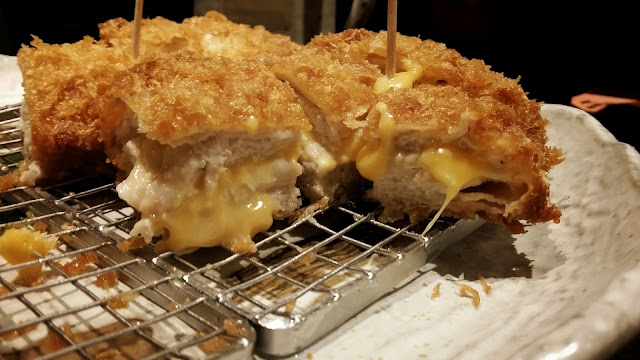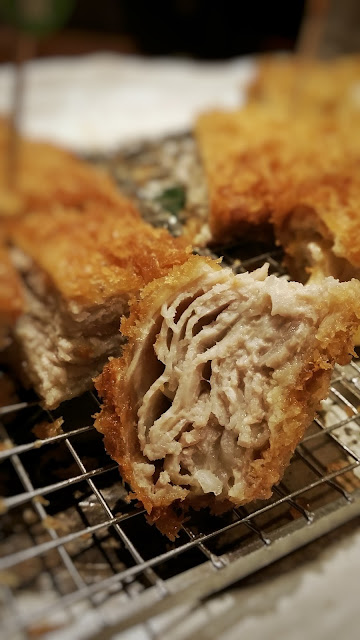 |
| Kani Miso Salad. 800 Yen |
I've struck gold.
In a land where almost everything is expensive, locating and having a meal here is akin to winning the sushi lottery (bar obtaining a reservation at Sukiyabashi Jiro or Sushi Saito).
I am of course, talking about Umegaokasushi no Midori, or Sushi Midori as it is more commonly known.
 |
Sushi Set. 2000 yen.
Top Row: Negitoro Handroll and Anago
Middle Row: Ikura, Kuruma Ebi, Tamago Yaki, Crab Leg Sushi, Uni
Bottom Row: Hotate (Scallop), Chutoro, Tai and Chutoro
|
Located at the bottom of an expressway among rows of restaurants, Midori Sushi bravely puts in a claim as the best in its class for offering value-for-money sushi. 2000 yen is enough to get you a set as shown above, while anything more can buy you an indulgent meal fit for a king. The quality here is also much better than expected, which gives you the ultimate bang for your buck. The Kani Miso Salad (Crab innards mixed with miso) was a powerful prelude to the sushi carnage that followed soon after.
 |
Triple Ponzu Appetizer. 800 yen
Ankimo (Monkfish Liver), Octopus and Shirako (Cod Fish Sperm Sacs) drizzled with Ponzu
and topped with Ohba and Wakame Seaweed |
Take for instance this appetizer. For 800 yen, I get 3 thick, large medallions of monkfish liver and generous helpings of
shirako and octopus enough to feed 3 people. The ankimo is soft and creamy, as is the shirako. The octopus is a little more chewy and the ponzu lends a refreshing and acidic aftertaste to whet the appetite.
 |
| Anago (600 yen). Let me know if you find the sushi rice. |
This has got to be the ultimate steal. For 600 yen, I got a piece of eel
the length of my forearm (>30cm). The
Anago despite its large size, still maintained a melt-in-your-mouth texture and the thick, sweet and savoury sauce was the icing on the cake that took me to eel heaven.
 |
| Clockwise from Top: Chutoro, Magurozuke, Otoro and Aburi Chutoro |
Ordering the different forms of Tuna, I am glad to say that all 3 (Akami, Chutoro, Otoro) fared competently and are definitely worth much, much more than the price they charge.
 |
| Otoro. (500 yen a pop) |
This is perhaps the only place where I can order 5
Otoro Nigiris at one go and not even worry about my wallet later. Each piece is well marbled and juicy, albeit a little veiny due to the intermuscular fascia commonly present in
Otoro. But at 500 yen a pop, I am certainly not complaining.
 |
| Sujiko Nigiri. 400 yen |
The next moment of epiphany was when the Sujiko (Salmon Roe still held in egg sacs) arrived. The chef had to use a large shiso leaf to fully contain all the salmon roe and they give you a sheet of
nori to wrap it yourself. Carefully placing the inter-connected sujiko and rice inside the nori, a few drops of
shoyu and one bite later, time stood still and the only sound I heard was the individual popping of each single roe as I burst them slowly with my teeth.
 |
| Top to Bottom: Aburi Hotate (Blowtorched Scallop) Otoro and Scallop |
The ingredients themselves are fresh and clean tasting. While certainly not comparable to the top-tier sushi restaurants that reside in Tokyo's luxury district, they more than hold their own with its mid-range quality and high turnover ensures that no customer gets seafood from the previous day.
 |
| Aburi Hotate |
The Aburi options here prove to be a hit as well with the foreign customers. Salmon,
Otoro, Scallop and
Botan Ebi are among the few options available for guests who crave for a different flavour for their sushi.
Pictures plastered all over the walls also feature specials of the season. The menus have English in them and the friendly waitstaff are happy to up sell and recommend their house specialities.
In all honesty, I have absolutely no idea how they are able to command such low prices given the generally expensive food cost of seafood. I can only assume that they buy in bulk and enjoy economies of scale, while the never-ending horde of customers waiting outside their doors provide a steady and constant revenue stream.
If there's only one thing that's not so pleasant, it is the queue. Waiting times are
at least 2 hours (I waited 3 hours for my table to be ready).
But the good folks here have purchased a ticketing machine and employed a system similar to clinics where customers can get a queue number and wait for their number to be called.
My advice? Go early and get a queue number and you can head off and spend the next 2 hours shopping and wandering in Ginza's shopping area. But do use your judgement and estimate roughly when your table will be ready so you will be present when they call your number. Come back later in a state of ravenous hunger and unleash the beast, while dealing serious damage to the world's seafood supply in the process.
Cheap food with respectable quality, Sushi Midori is truly the find of the decade for me.
Yet.
Umegaokasushi no Midori (Sushi Midori)
7-2 Ginza, Chuo-ku 104-6601, Tokyo
Operating Hours
Monday to Saturday: 1100-2200. (Last Order at 2130)
Sunday and Holidays: 1100-2100 (Last Order at 2030)
Closed on New Year's (1st January)
Nearest Station: Ginza or Shimbashi Station on the Ginza Subway Line.
Note: The shop is located below an expressway along the train tracks, so use the train tracks/expressway as a point of reference when using GPS to locate the restaurant.























